At These North Woods Cabins in Maine, Quiet Is the Main Attraction
This article originally appeared on Outside
Ever come across an incredible hotel that stops you mid-scroll and makes you think, Wow, wouldn't it be something to stay there? We do, too--all the time. Welcome to Friday Fantasy, where we highlight amazing hotels, lodges, cabins, tents, campsites, and other places perched in perfect outdoor settings. Read on for the intel you need to book an adventure here. Or at least dream about it.
Why We Love Debsconeag Lake Wilderness Camps
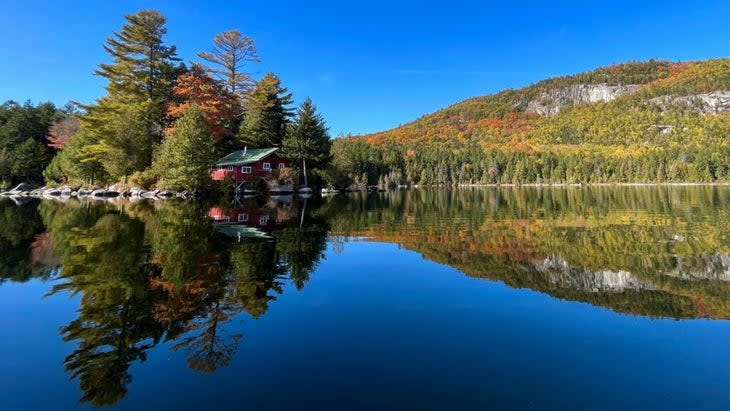
You'll know your vacation here is beginning when, at the end of a 25-mile dirt road, you move your drybags and wanigans into a 22-foot wood-and-canvas canoe and greet the staffer waiting to paddle you the mile up Fourth Debsconeag Lake (pronounced DEBS-con-egg or DEBS-con-eeg) to the Debsconeag Lake Wilderness Camps (DLWC).
"It's a nice threshold," says Maine guide Greg Shute, who used to direct programs for the outdoor-education Chewonki Foundation, which owns the property, and now runs DLWC. "It really takes away the temptation to go back to the car." Not that you'll want to--this comfortable off-grid scattering of five waterside cabins and two large yurts in the heart of the North Woods is a deeply, deeply quiet place to canoe, kayak, fish, swim, and hike.
In a region dominated by commercial timberlands, here you can still find mossy stands of huge primeval trees. The cabins dot the western shore of Fourth Debsconeag Lake, one of a chain of eight lakes (some say six lakes and two ponds) that flow into the West Branch of the Penobscot River. DLWC sits within the 42,000-acre Nahmakanta Public Reserve, which is abutted to the east by the Nature Conservancy's 46,000-acre Debsconeag Lake Wilderness. So a stay at this quintessential Maine hideaway will just be you, the moose, the lynx, and a few fellow vacationers.
Adventure Intel
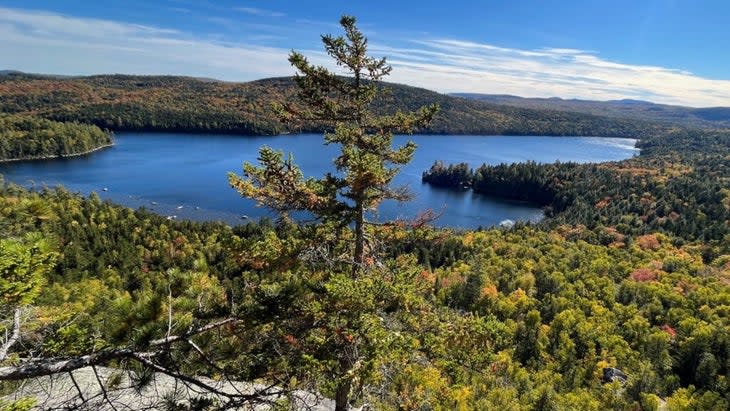
In the late 1800s, the journey to this destination entailed a train, horse-drawn buckboard wagon, and then canoe to 223-acre Fourth Debsconeag, where travelers would stay for weeks, hunting moose and woodland caribou and fishing for brook trout. It's no longer much of a draw to hunters but instead appeals to birders (camp staff contribute warbler-migration data to the Maine Breeding Bird Atlas), anglers, and hikers. From the camps, it's a mile and a half to the Appalachian Trail--thru-hikers occasionally wander in to enjoy a clean bed--and innumerable other trails lead up to granite balds for views of 5,268-foot Mount Katahdin and out to ancient spruce and hemlock groves.
Most of all, this is canoeing country. Debsconeag means "carrying place," and portaging is part of the adventure. You can put in at camp and paddle from lake to lake for days or even weeks. For a great overnight, follow part of a Penobscot hunting route across the stunningly clear Fourth Debsconeag Lake, portaging and paddling over to Third and Second Debsconeag Lakes, and camping at the mouth of Big Minister Stream. Then double back and end day two with a hot pull-chain shower at DLWC's Shower House. Whatever you have planned, the camp can lend binoculars, maps, and expert advice.
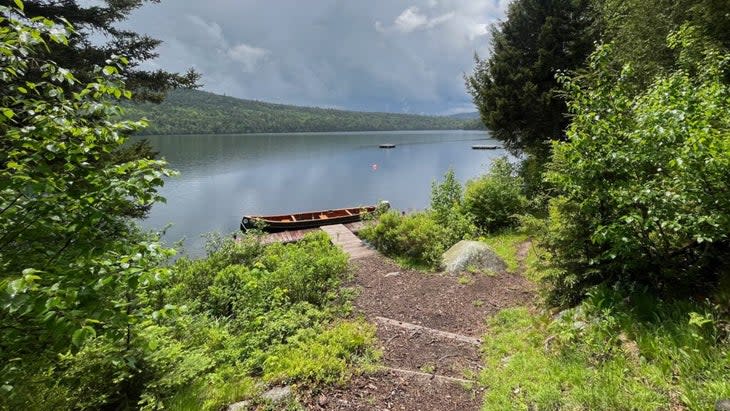
If you're looking to stay closer to your cabin, there are hiking routes of all lengths, and DLWC keeps boats stashed at several nearby ponds for fishing or pure messing around. Brookies and lake trout are plentiful but savvy, so fisherfolk should get directions to the prime spots from Shute. "I'll give guests tips when they're here," he says pointedly.
Choice Cabins
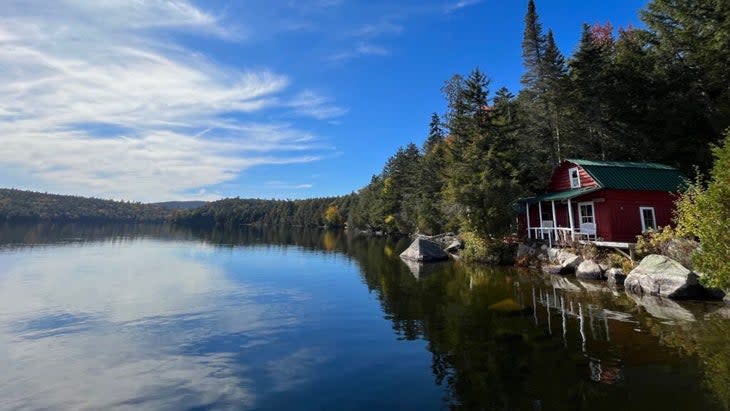
The Point Camp cabin sleeps six, with a porch that overlooks water frequented by loons. Also notable is the Birch Camp, with overnight space for up to four and an interior that's an early-20th-century masterpiece of birchbark marquetry; oral history has it that the Wabanaki woman who lived in the cabin created the mosaics while her partner was off working his traplines. Wherever you sleep, it's bound to be quiet: the camp's electricity is largely solar-powered (read: no diesel-generator racket), and few motorboats ply the lake. Also, there's no cell service anywhere on-site, and just enough internet bandwidth to check your email for emergencies but not nearly enough for doomscrolling. "It's kind of perfect this way," says Shute. It's possible to rent out the whole camp, including its industrial kitchen, for retreats and reunions of up to 24 people.

Eat and Drink
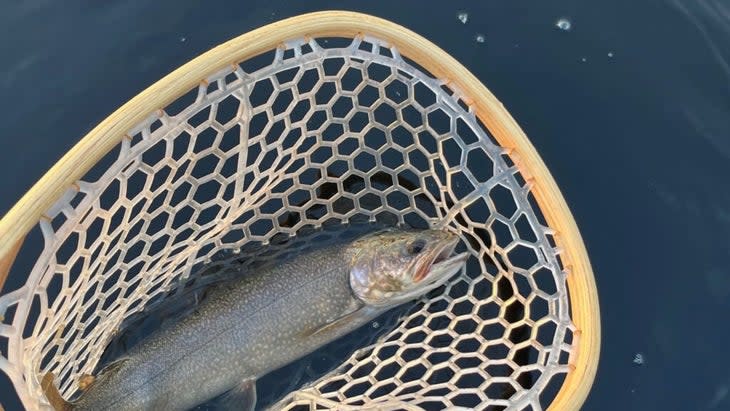
BYO food and drink. You can stock up in the towns of Greenville, two hours southwest, or Millinocket, 90 minutes southeast. Shute does serve morning coffee and tea, plus weekend baked goodies, at the main lodge, an airy gathering space with a woodstove, field guides, maps, and board games, where guests and staffers swap stories and trade intel. On the way in (and heck, on the way out too), stop at Spring Creek Barbecue in Monson. Might as well close your eyes and point at its specials board--everything there is amazing, not least the pulled-pork sandwiches.
When to Go
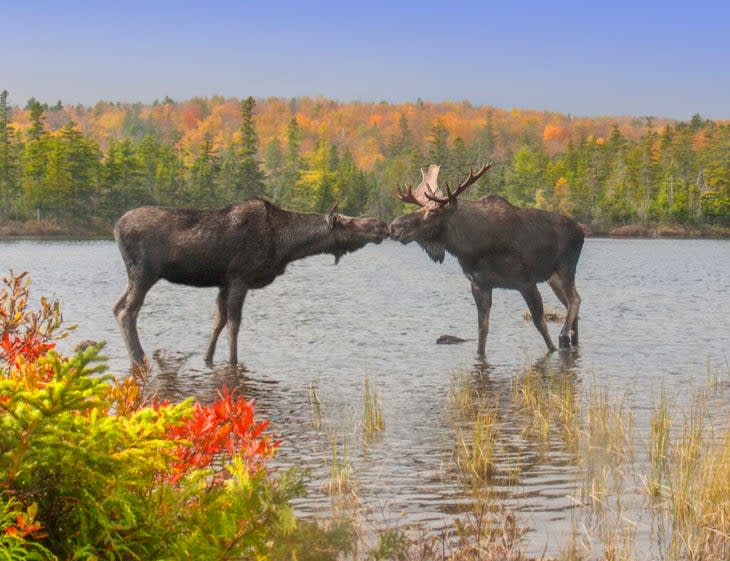
DLWC is open for reservations from the second week of May to mid-June, and from late July to Indigenous People's Day (October 9 this year, October 14 in 2024). Fishing is best early in the season and again in September. Birders should note that peregrine falcons start nesting in the cliffs in late April or so and remain with the chicks into August. The sugar maples in late September and October are a scarlet spectacle.
How to Get There
When you make your reservation, you might want to go over the directions in detail with a staff member. Shute's crew has taken care to mark all intersections with signs, starting as soon as the pavement ends at the junction of Route 11 and the Jo Mary Road. The distance is drivable in a Pruis, easy with all-wheel drive. Or for an aerial experience, Katahdin Air can fly you in on a floatplane from Ambajejus Lake, outside Millinocket ($110 per person each way with a two-passenger minimum).
Don't Miss
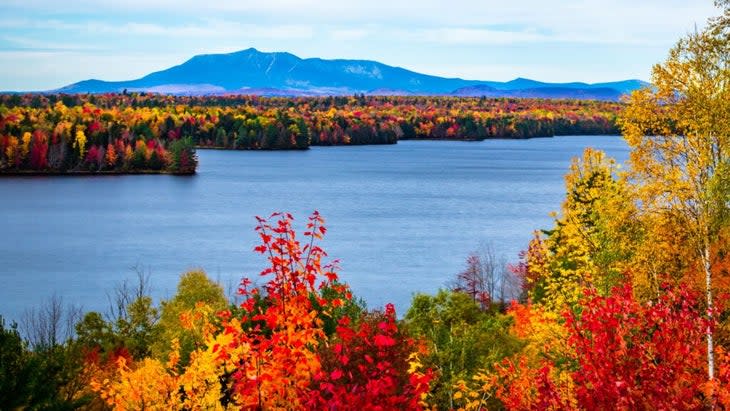
Shute recommends spending a day hiking the Debsconeag Backcountry Loop, an eight-mile route around Fourth, Fifth, Sixth, Seventh, and Eighth Debsconeag Lakes. You'll cross open ledges fuzzed with reindeer lichen and take in views of 3,645-foot White Cap Mountain, the Barren-Chairback Range, and Mount Katahdin.
Details
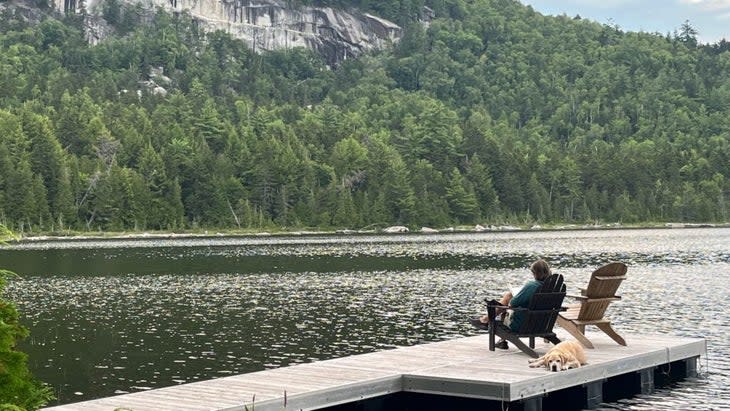
To book: Chewonki.org/vacation-rentals/debsconeag-lake-camps/
Price: From $140 per night
Address: 1094 Nahmakanta Stream Road
T1 R11 Piscataquis County
Nahmakanta Reserve, North Maine Woods, ME
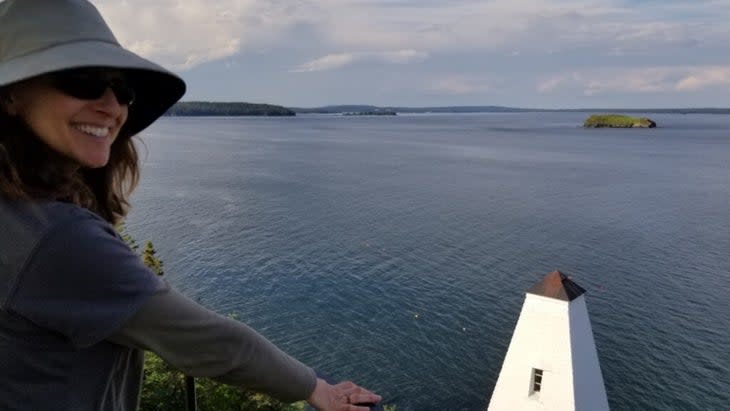
When Gillian Burnes first moved to central Maine 21 years ago, she'd tag along on her soon-to-be-husband's community organizing trips to the North Woods. Coming from New Mexico, she was alarmed by the bug life at first. But she grew to love the easygoing ruggedness of North Woods camp culture--especially without the diesel generators.
For exclusive access to all of our fitness, gear, adventure, and travel stories, plus discounts on trips, events, and gear, sign up for Outside+ today.

